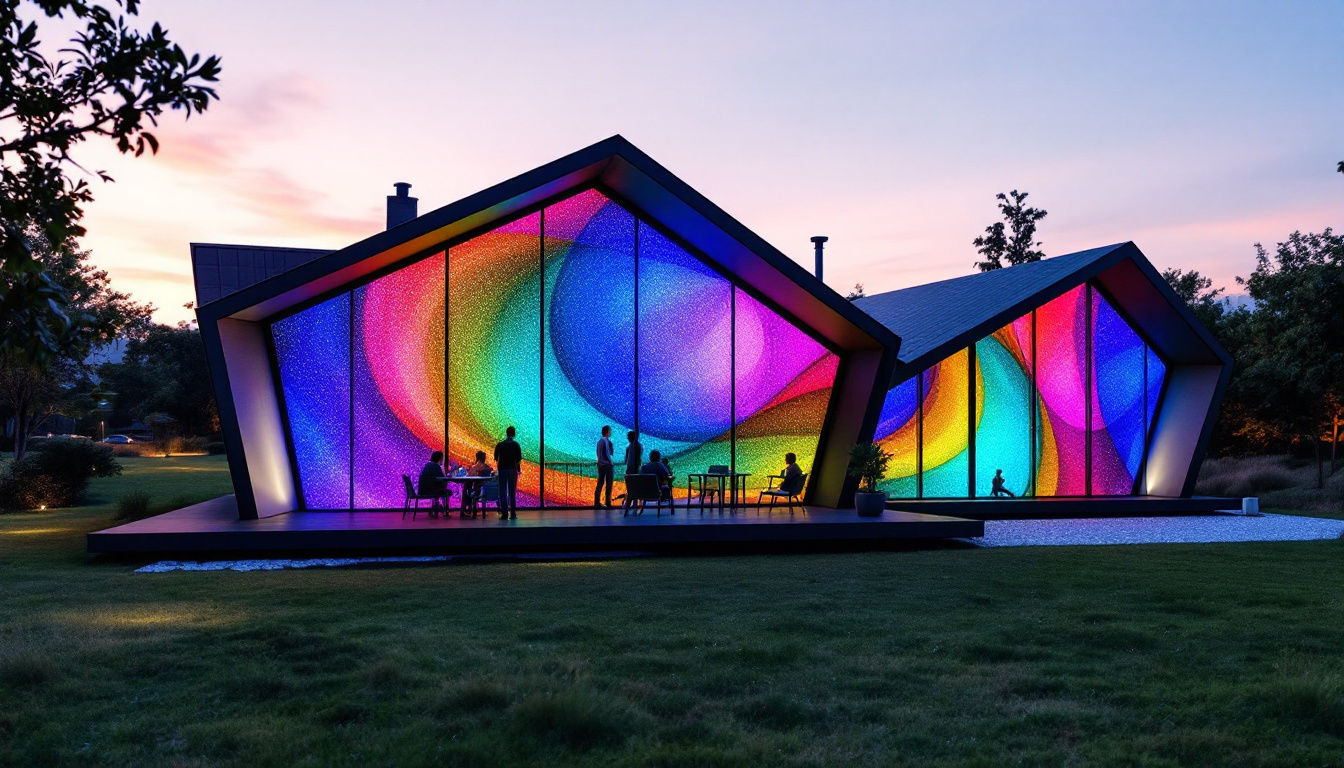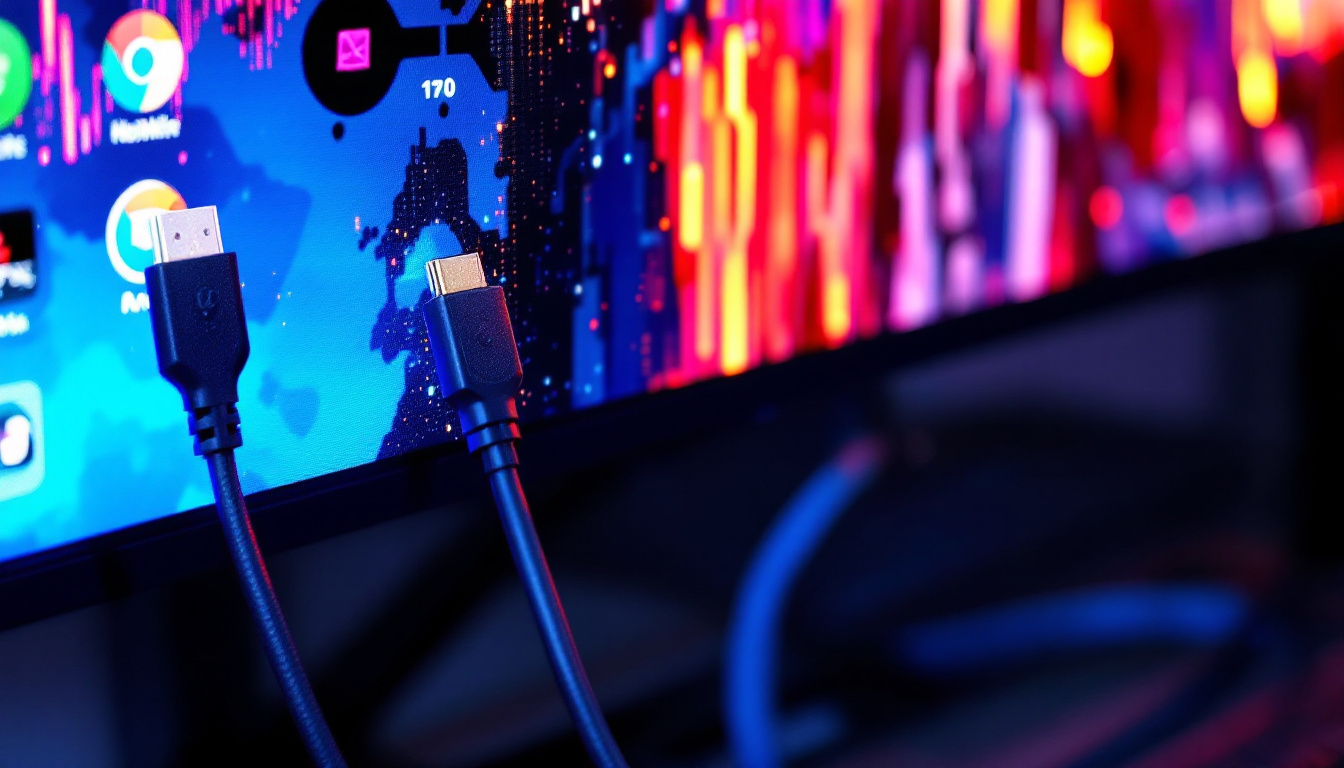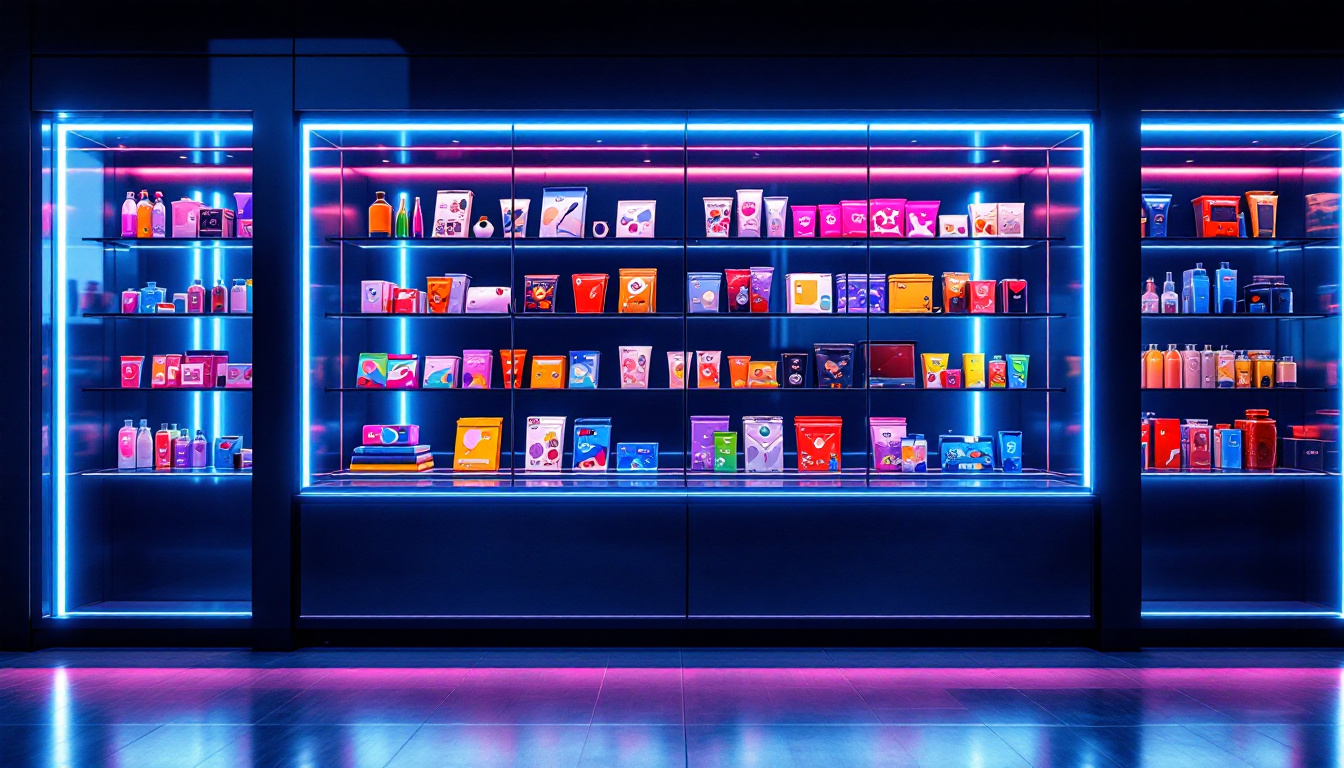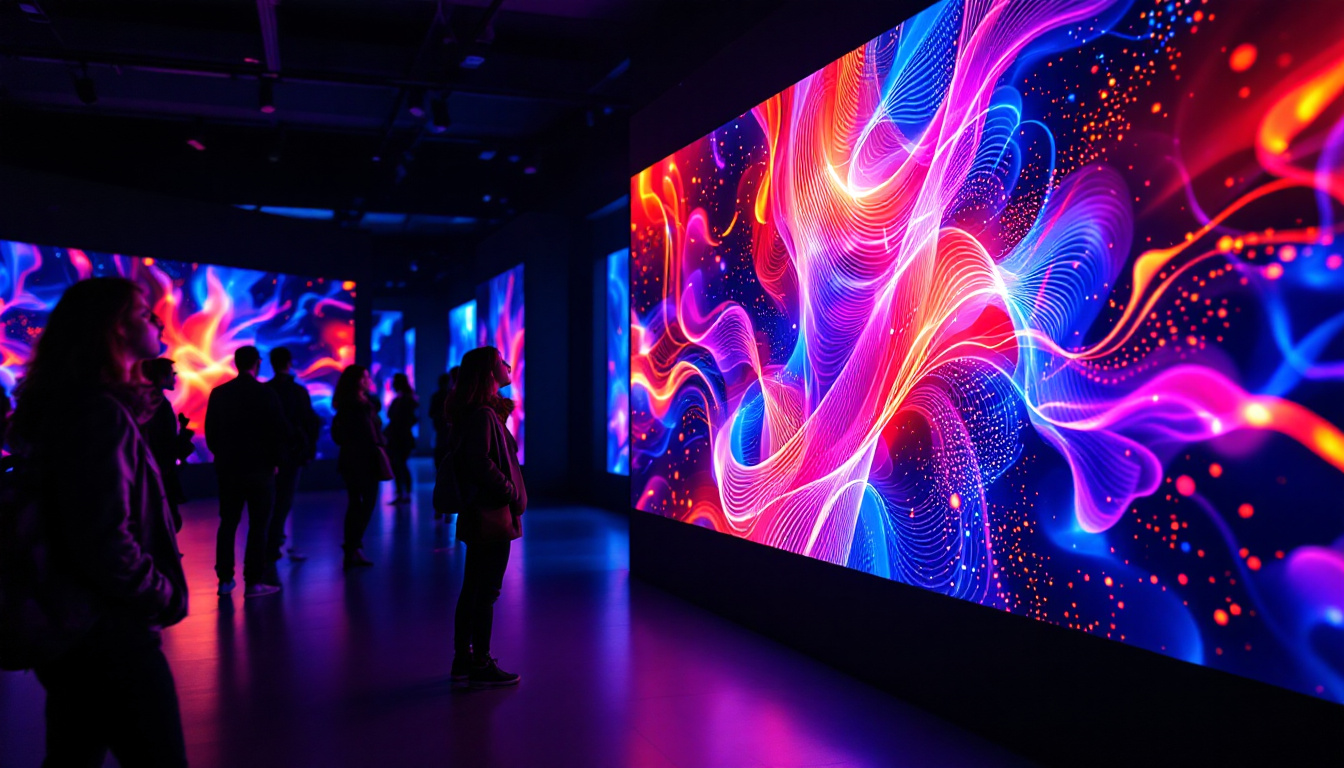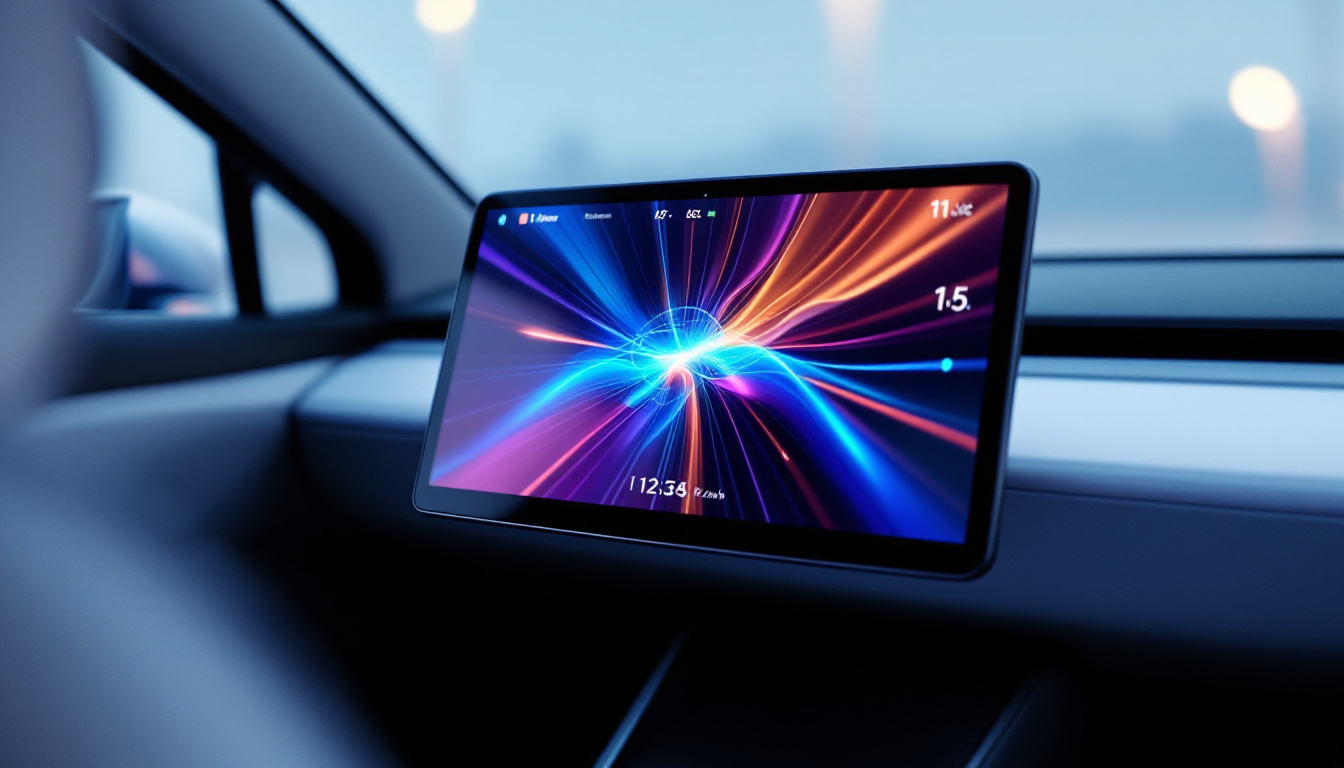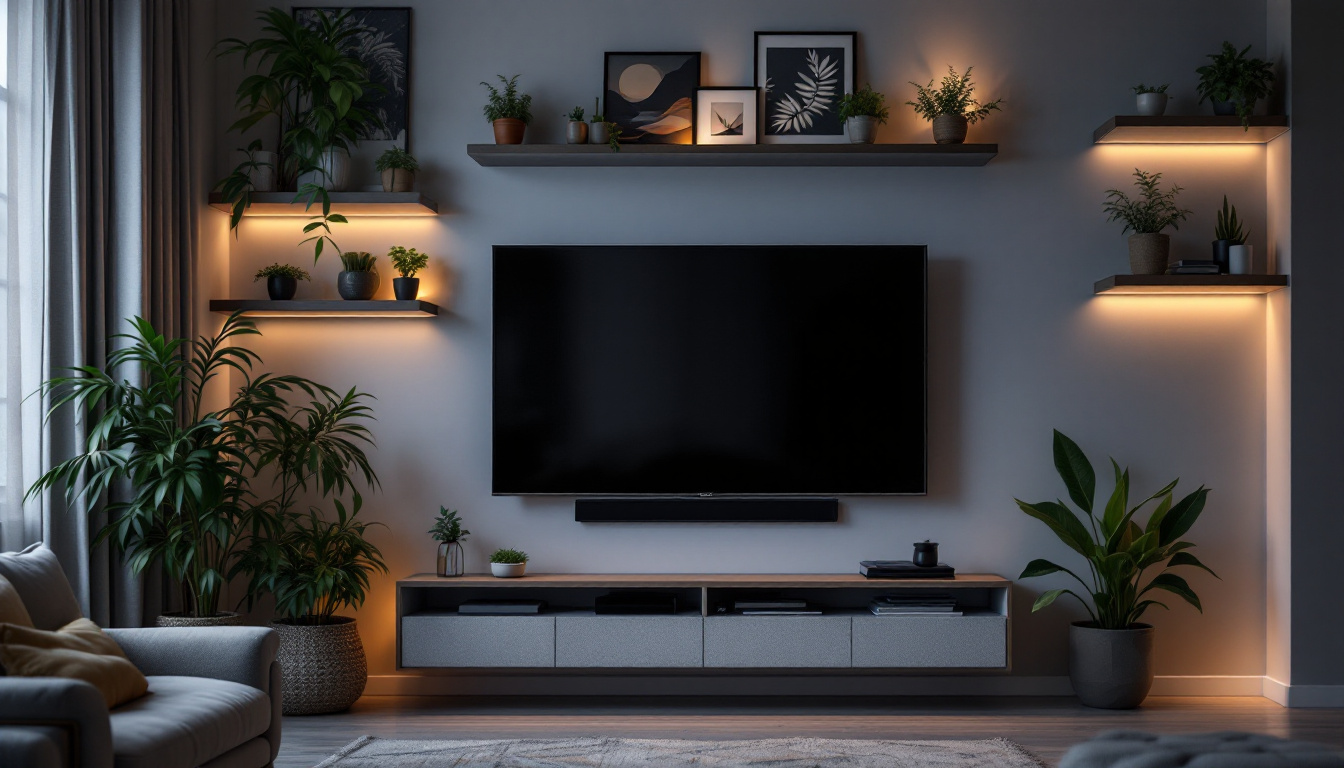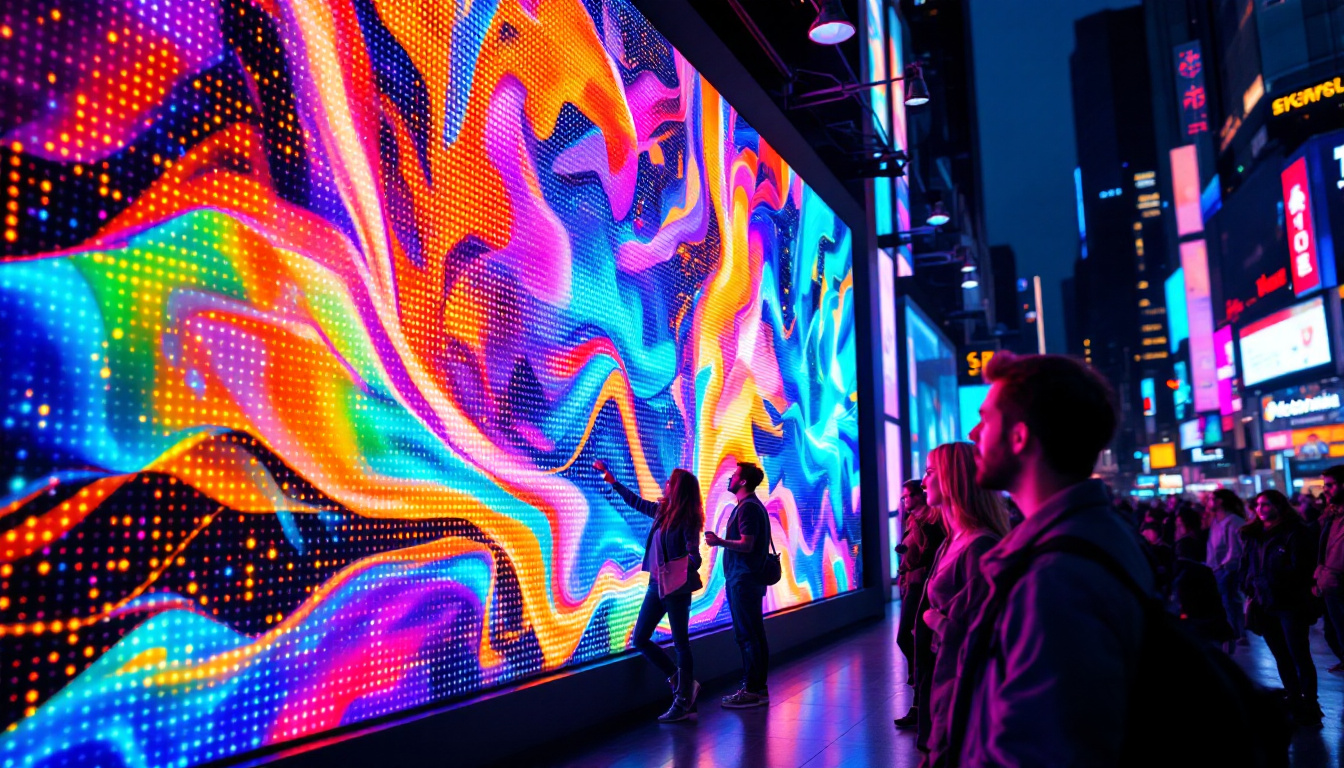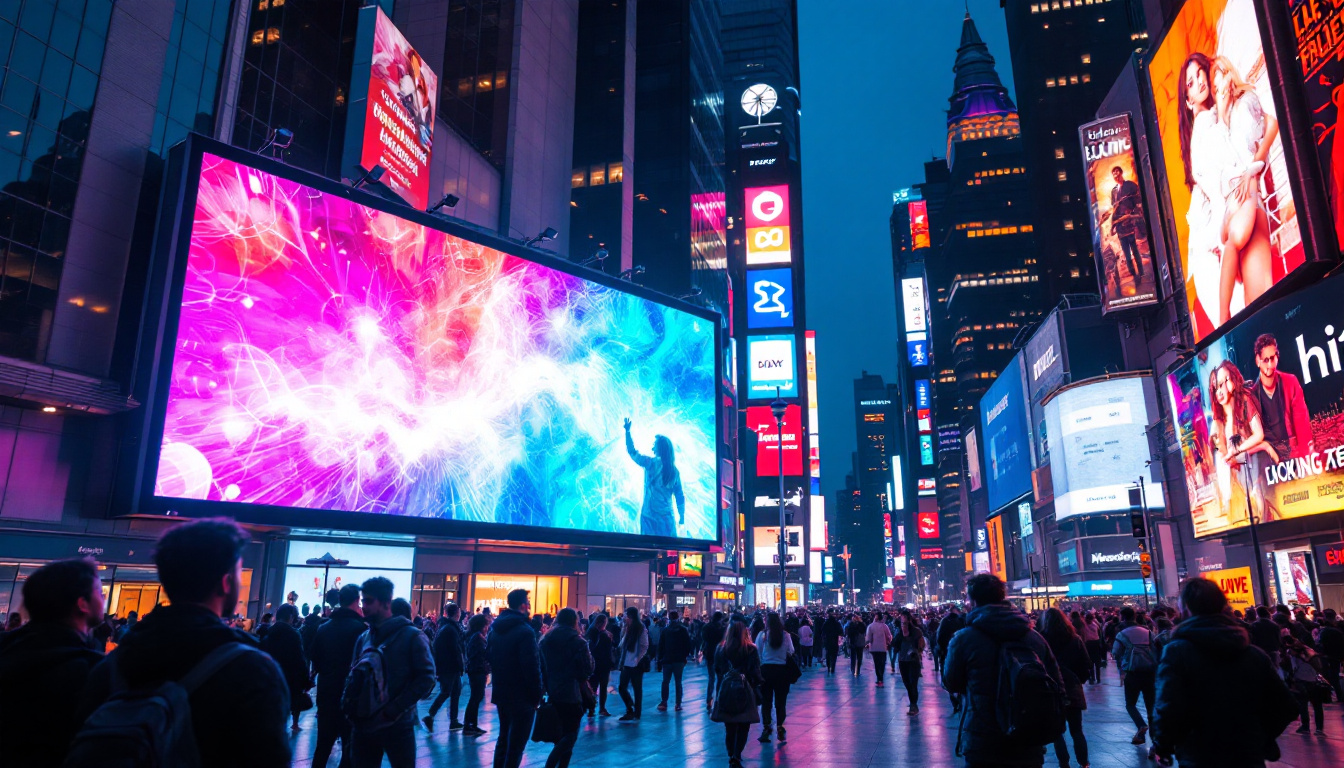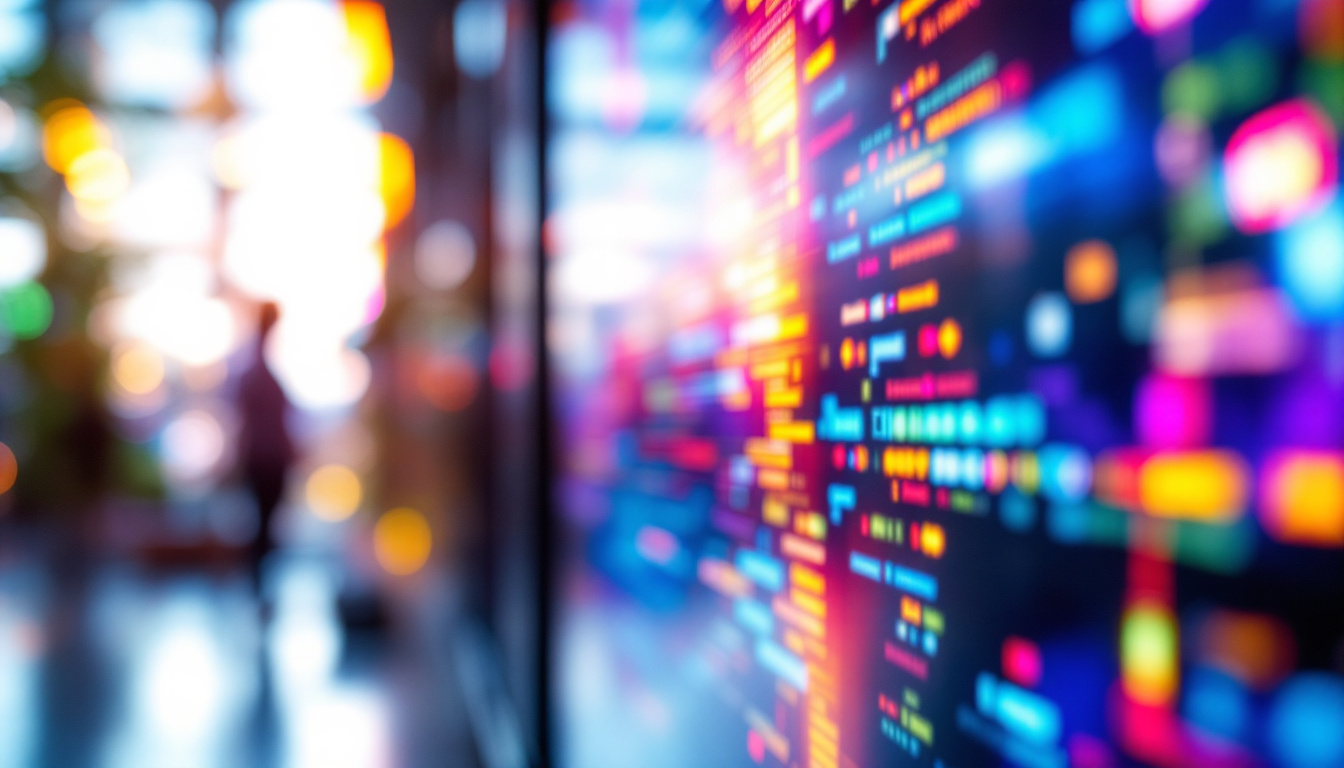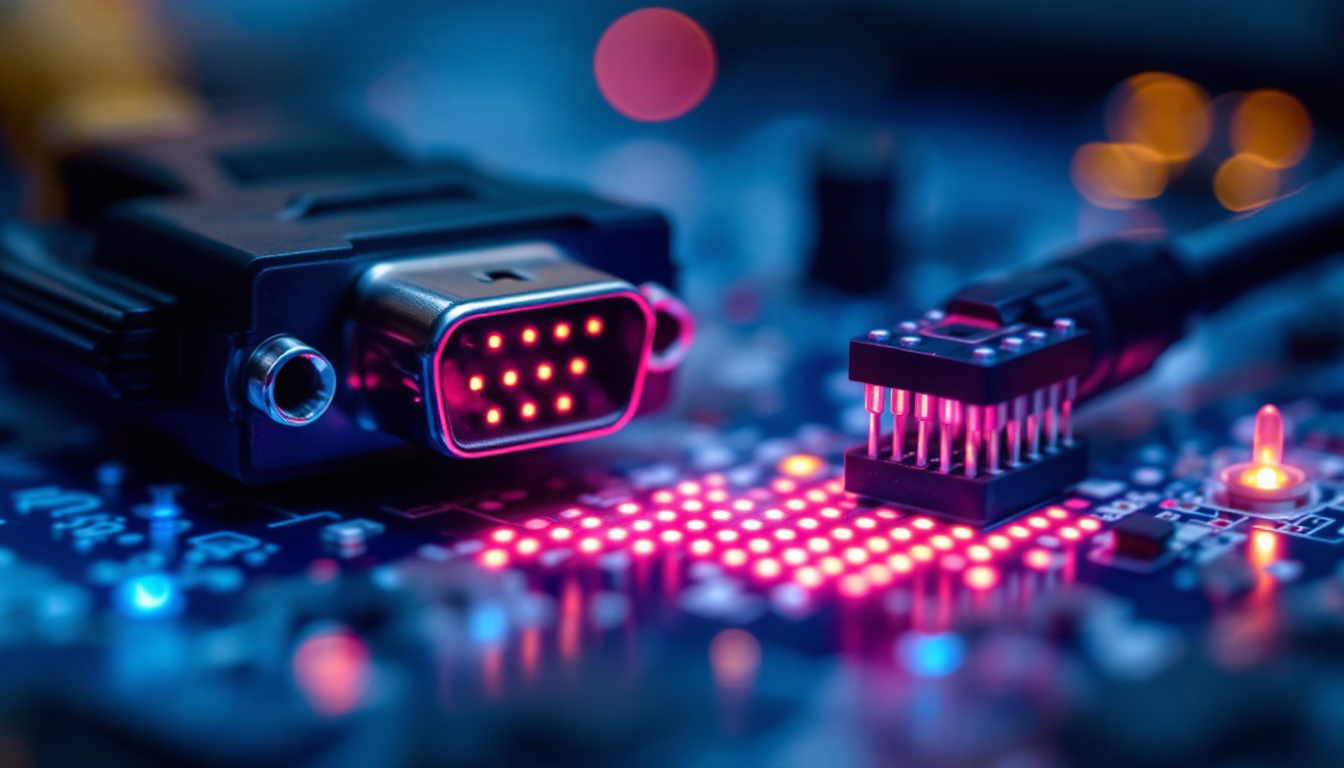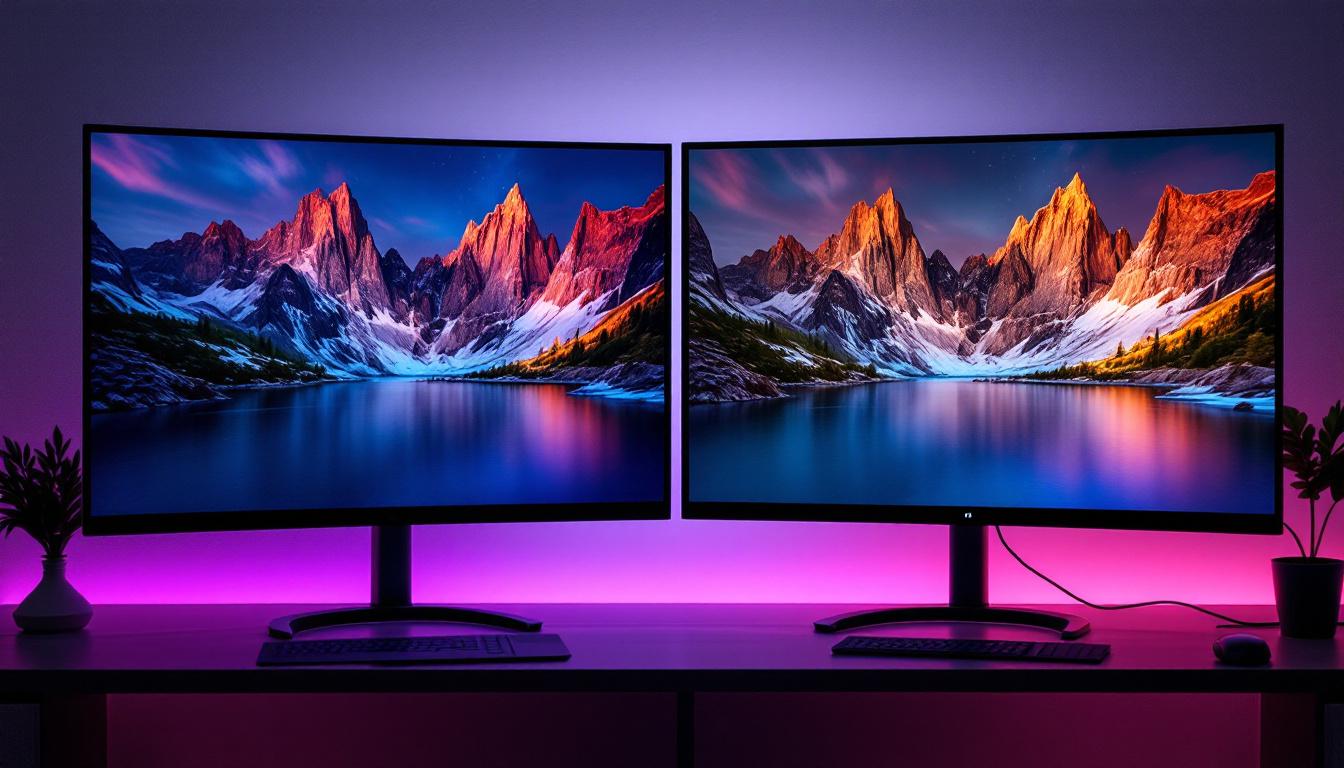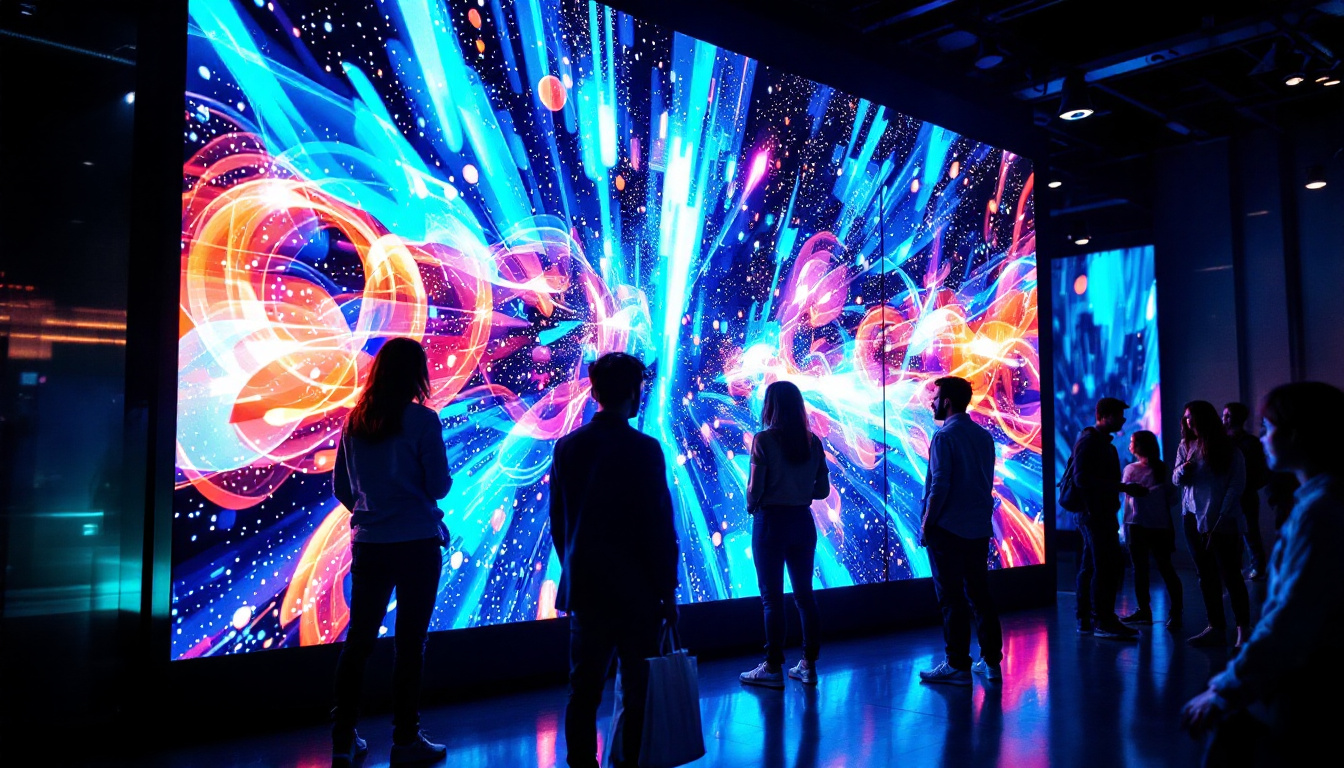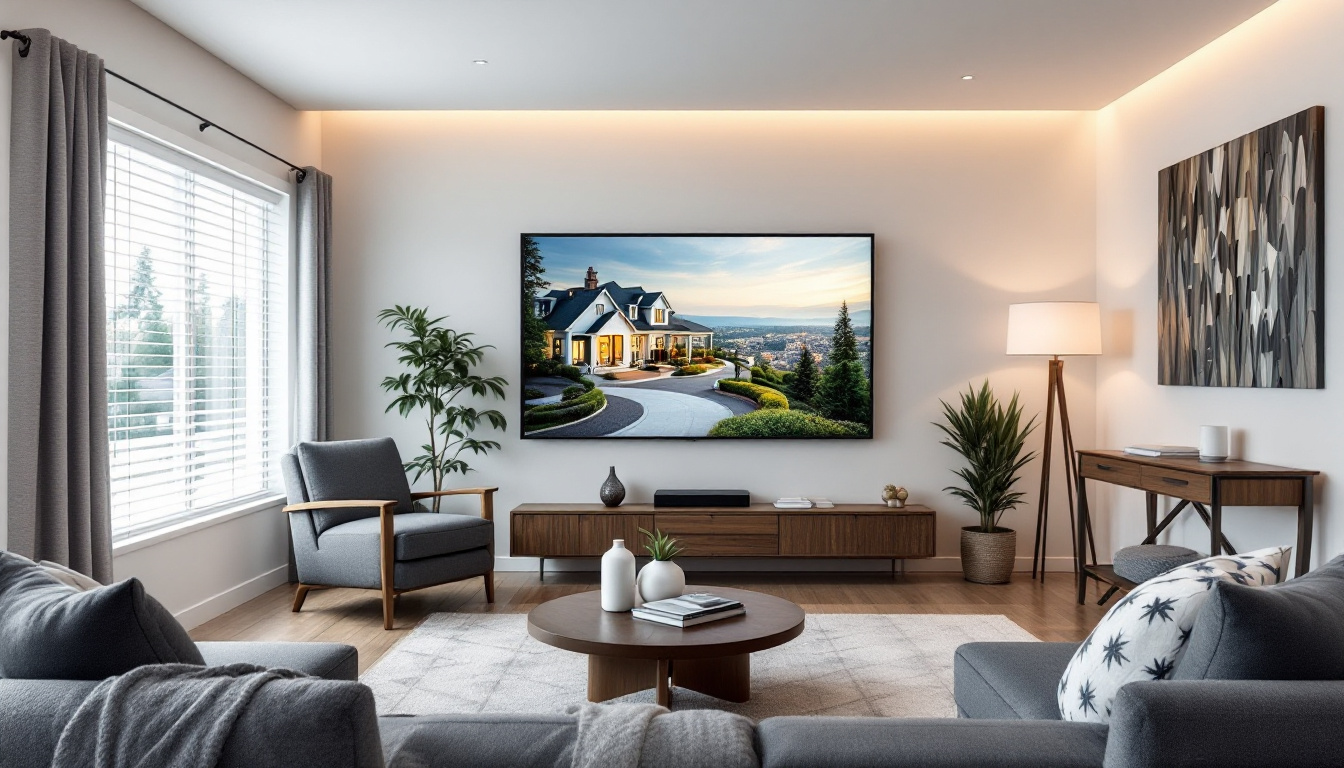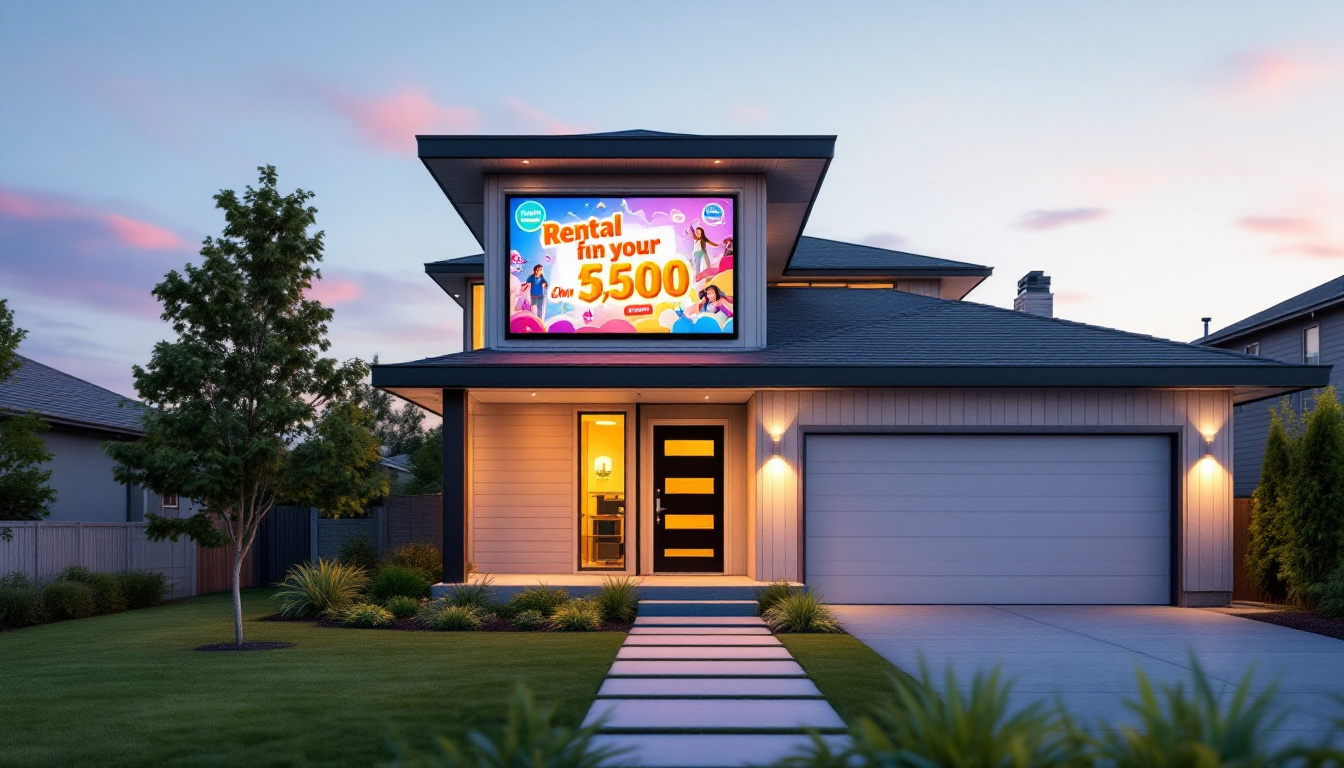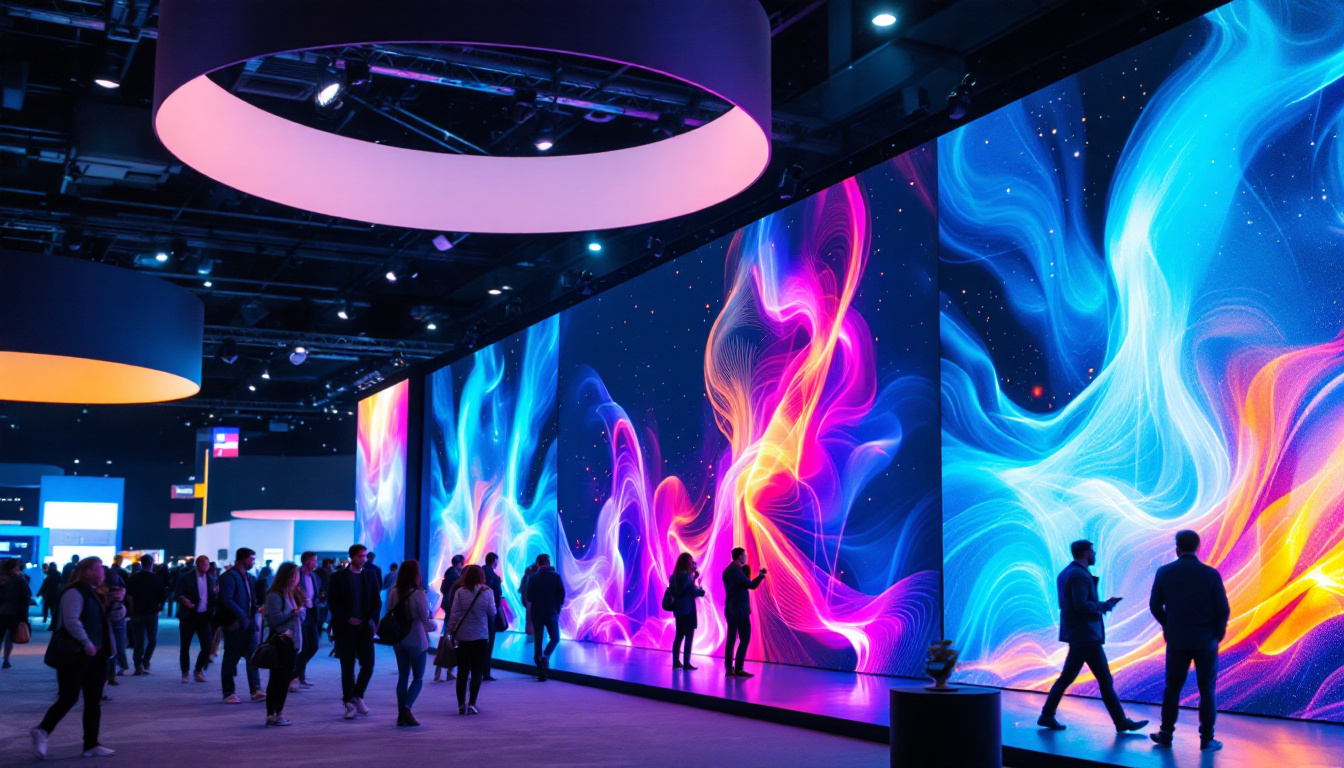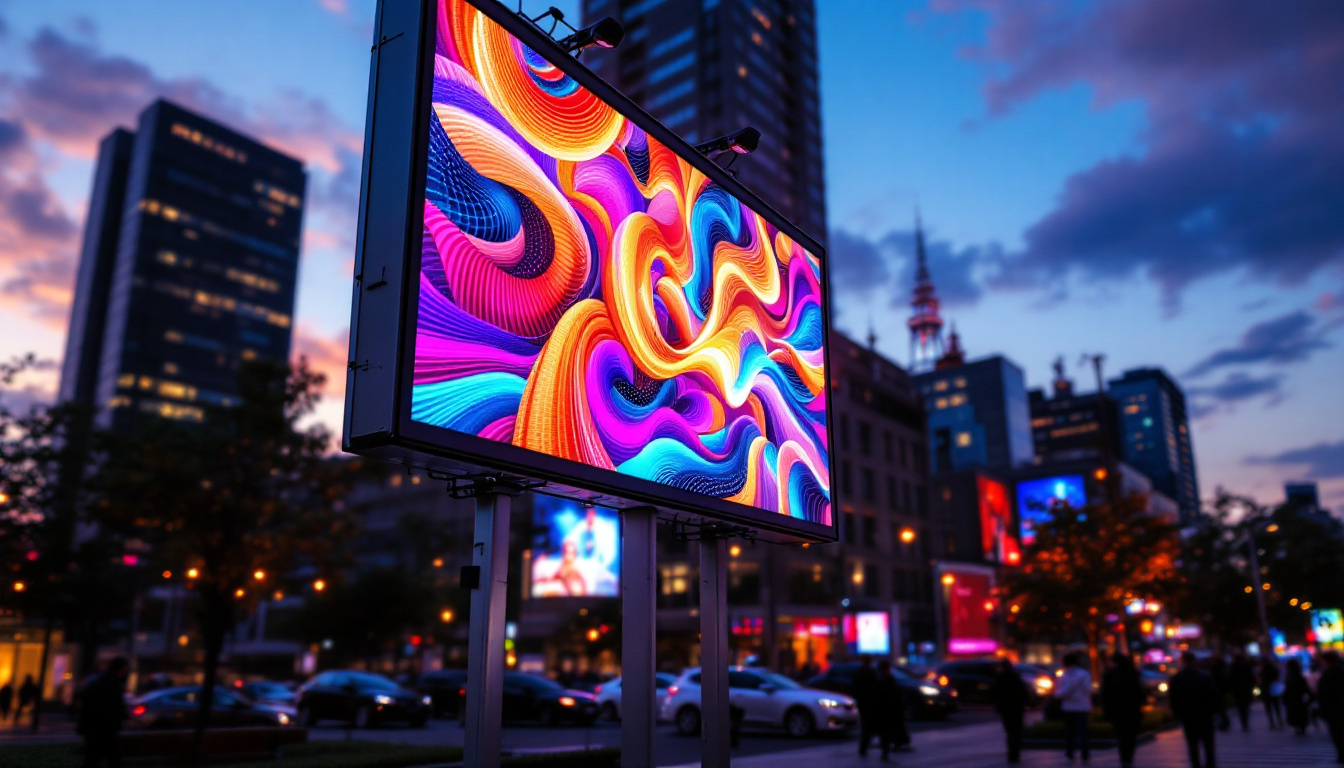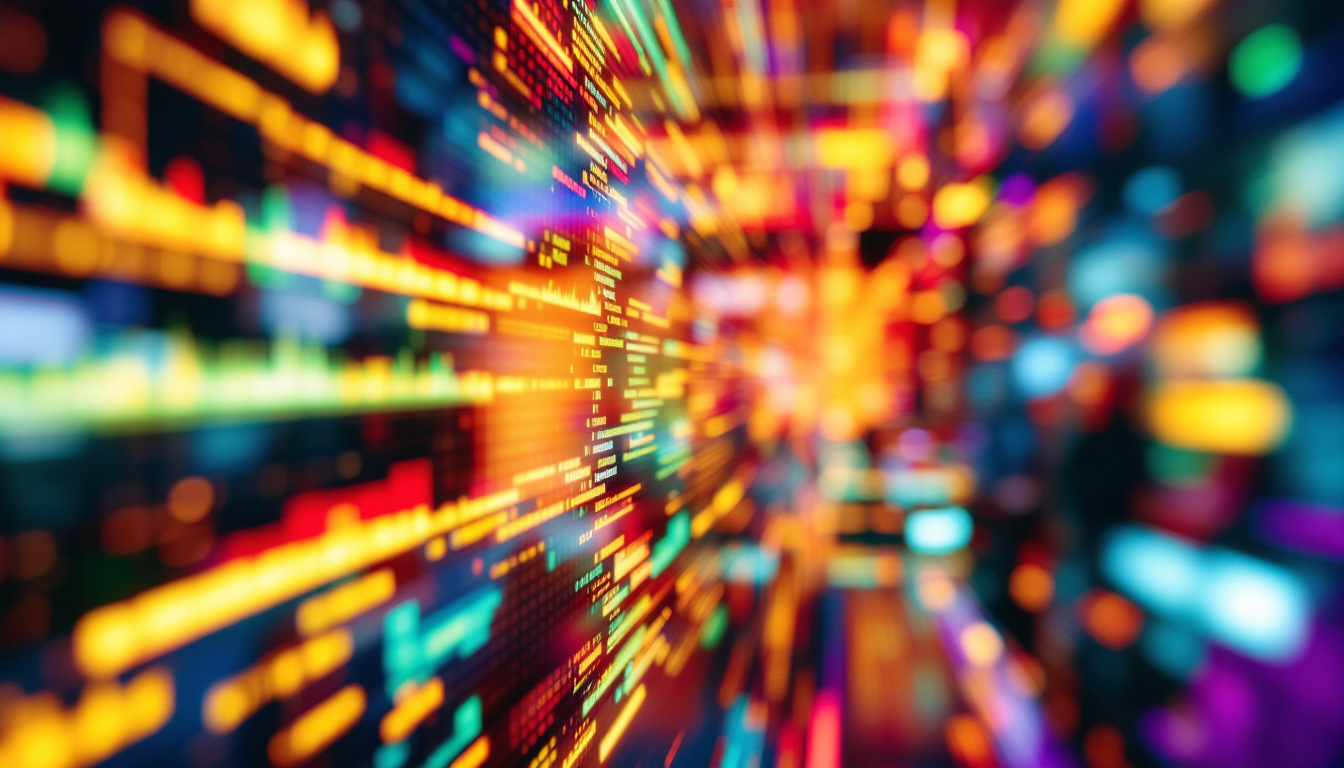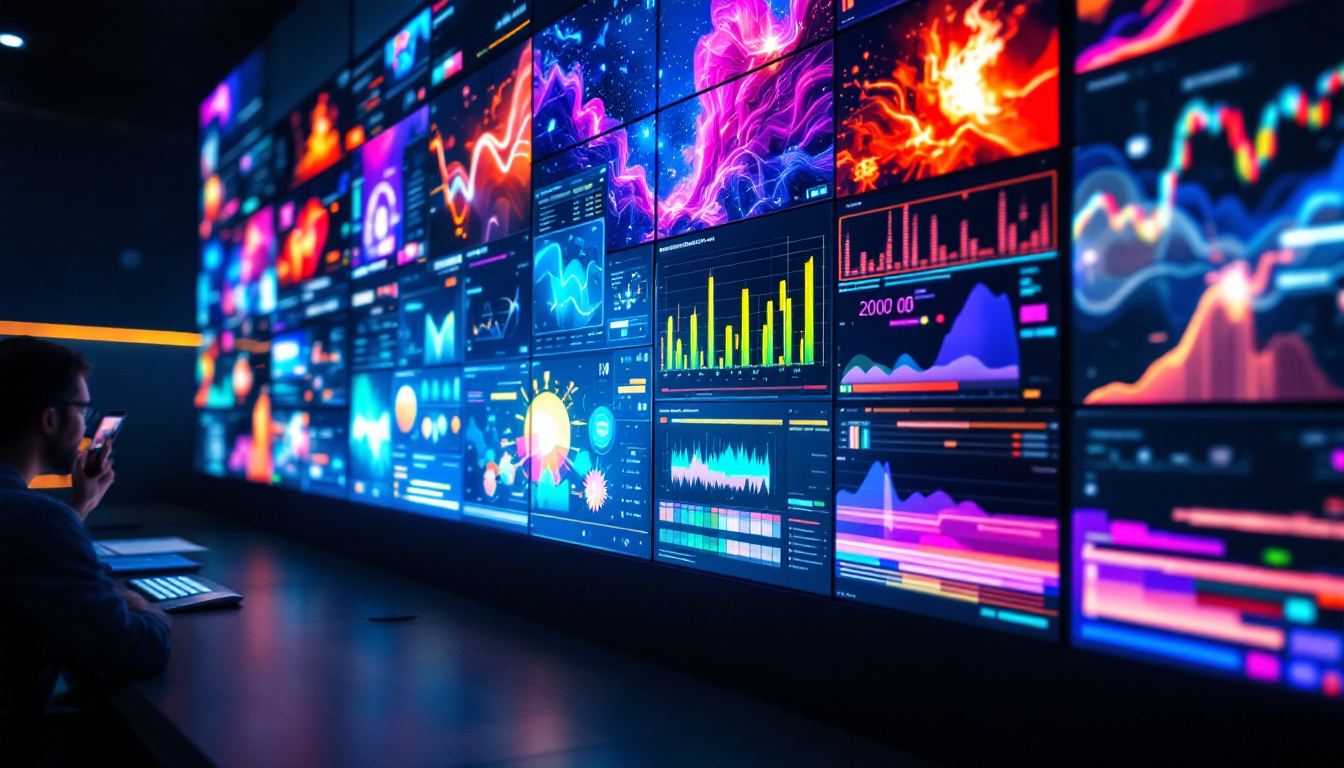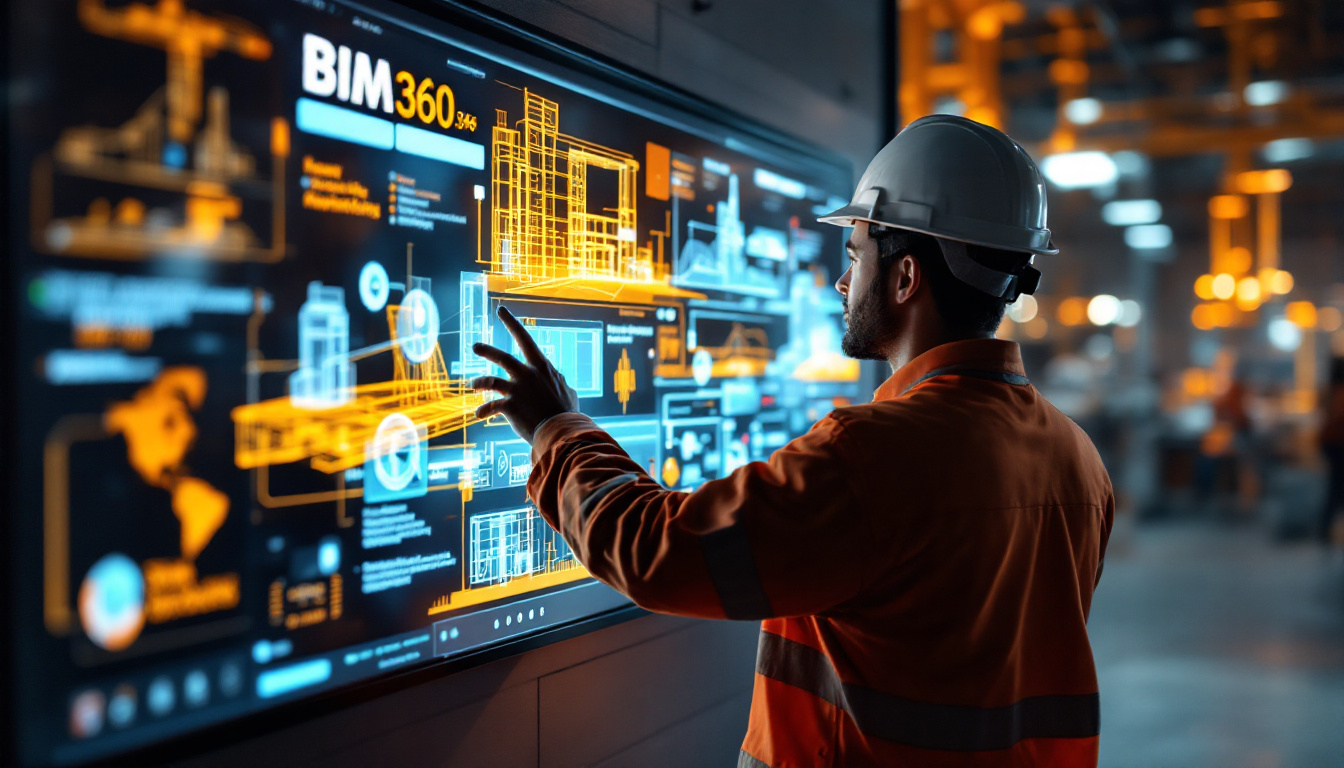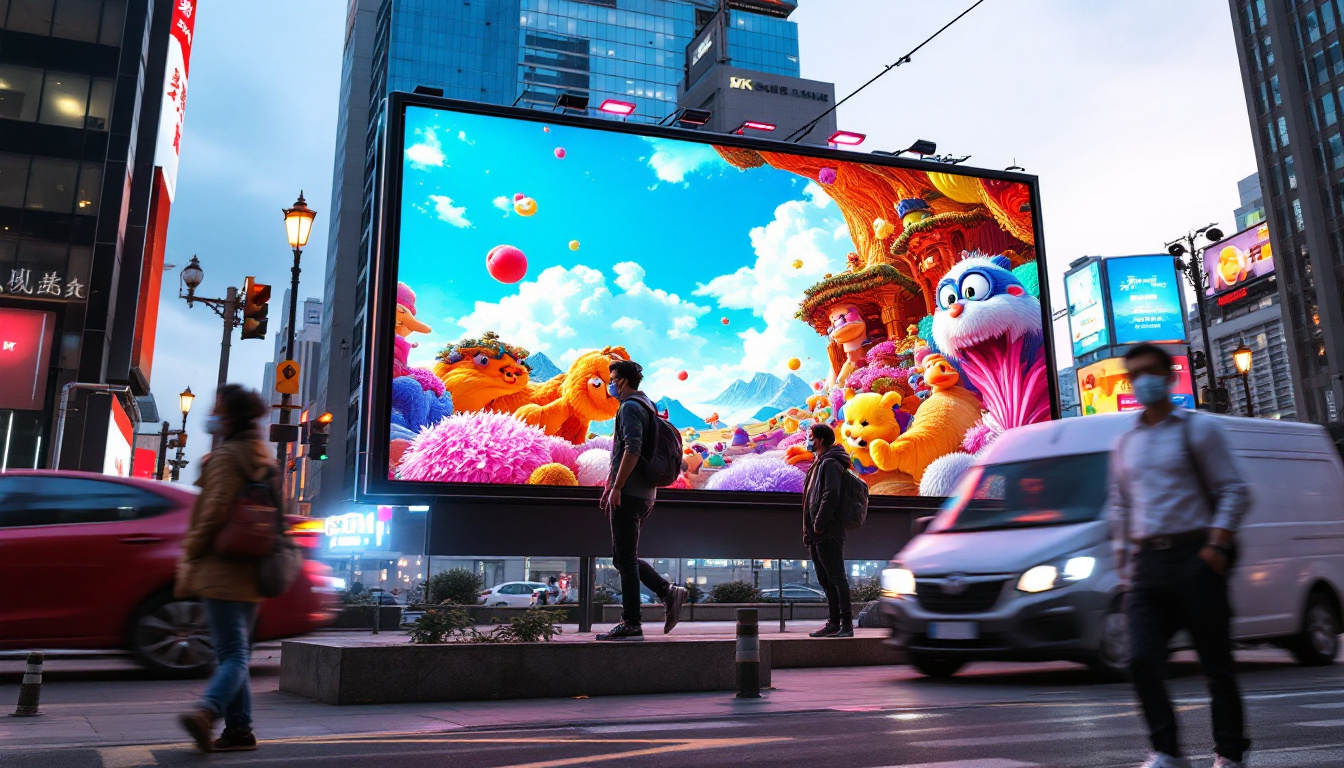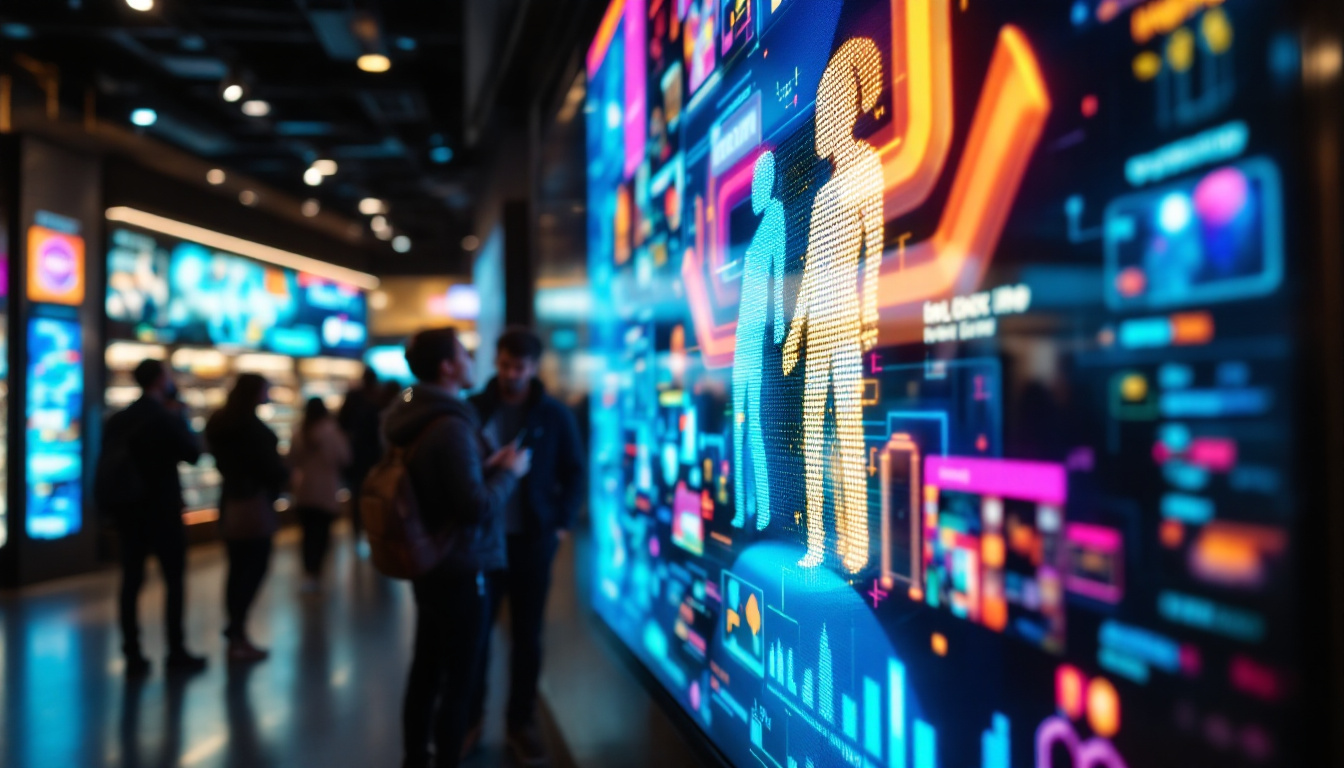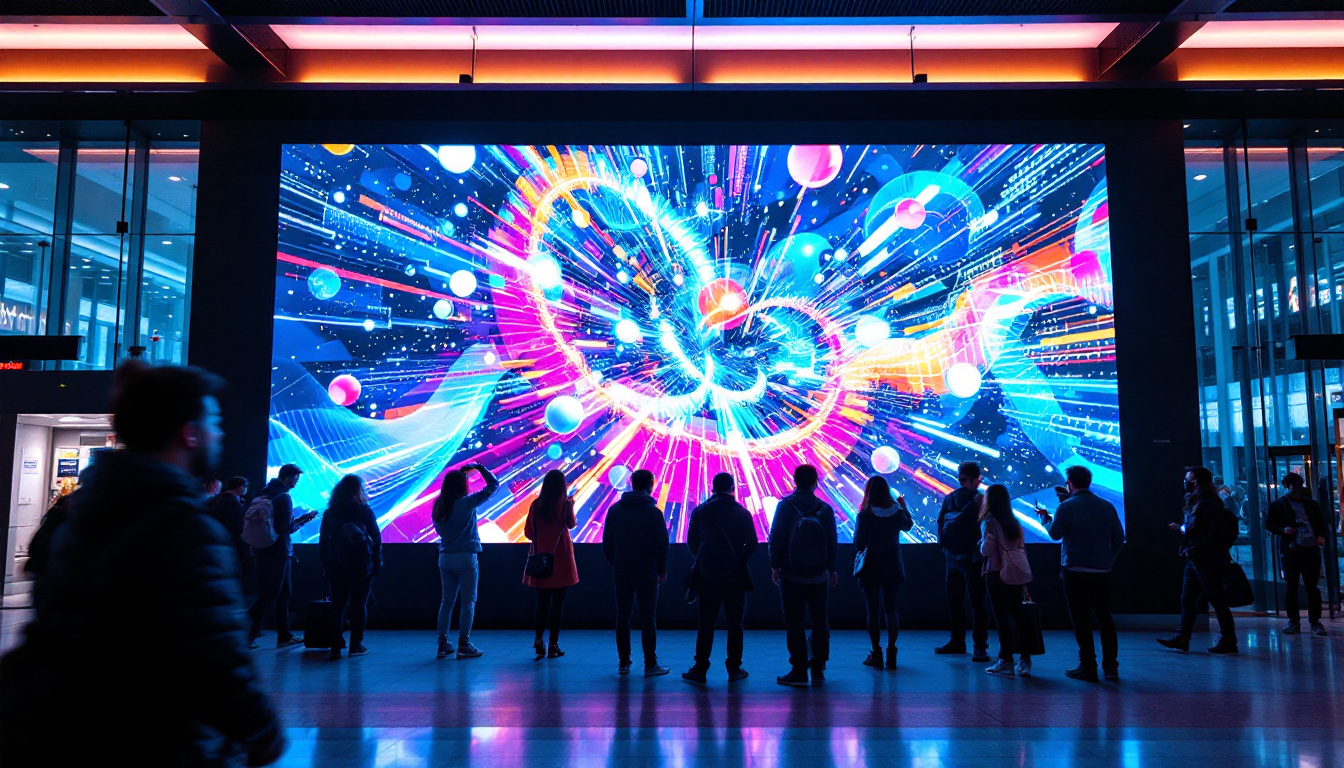In the world of visual communication, LED displays have emerged as a powerful tool for conveying messages effectively. Whether used in advertising, public information, or entertainment, LED technology has transformed the way information is presented. This article delves into the intricacies of LED displays, exploring their functionality, advantages, and applications, particularly in the context of Pdx Print.
Understanding LED Technology
Light Emitting Diodes (LEDs) are semiconductor devices that emit light when an electric current passes through them. This technology has revolutionized the display industry due to its efficiency, brightness, and versatility. Unlike traditional displays that rely on backlighting, LED displays use individual diodes to create images, resulting in sharper visuals and lower energy consumption. The compact size of LEDs also allows for thinner and lighter display designs, making them ideal for a variety of applications, from smartphones to large-scale outdoor screens.
How LED Displays Work
LED displays consist of numerous tiny LED lights arranged in a grid. Each LED can be controlled independently, allowing for a wide range of colors and brightness levels. When an image is displayed, the corresponding LEDs light up in specific patterns to create the desired visual effect. This capability enables dynamic content, such as videos and animations, to be shown seamlessly. The rapid response time of LEDs also contributes to their ability to display fast-moving images without blurring, making them perfect for sports events and high-action scenes.
Moreover, the technology behind LED displays has evolved significantly. Modern displays utilize advanced techniques such as pixel pitch, which refers to the distance between the centers of two adjacent pixels. A smaller pixel pitch results in higher resolution and clearer images, making it ideal for close viewing distances. Additionally, innovations in color calibration and brightness adjustment have further enhanced the viewing experience, ensuring that colors remain vibrant and consistent across different lighting conditions.
Types of LED Displays
There are several types of LED displays, each designed for specific applications. The most common types include:
- Outdoor LED Displays: These are built to withstand various weather conditions and are often used for billboards and large signage. With features like high brightness levels and protective coatings, outdoor LEDs can be easily viewed in direct sunlight, making them effective for advertising and public announcements.
- Indoor LED Displays: Typically used in venues such as theaters and conference rooms, these displays offer high resolution for close-up viewing. They often incorporate advanced technologies like HDR (High Dynamic Range) to enhance color depth and contrast, providing an immersive experience for audiences.
- Transparent LED Displays: These innovative displays allow light to pass through, making them suitable for retail environments where visibility is essential. By blending digital content with the physical environment, transparent LEDs create eye-catching displays that engage customers without obstructing sightlines.
In addition to these common types, there are also specialized LED displays, such as flexible LED screens that can be curved or shaped to fit unique installations. These screens are particularly popular in creative advertising and art installations, where traditional display formats may not suffice. Furthermore, advancements in smart LED technology have led to the development of displays that can connect to the internet, enabling real-time content updates and interactive features that enhance viewer engagement.
The Advantages of LED Displays
LED displays offer numerous advantages over traditional display technologies, making them a preferred choice for many businesses and organizations. Understanding these benefits can help in making informed decisions regarding visual communication strategies.
Energy Efficiency
One of the most significant advantages of LED displays is their energy efficiency. Compared to traditional incandescent bulbs or fluorescent lights, LEDs consume significantly less power. This not only reduces operational costs but also minimizes the environmental impact, making them a sustainable choice for businesses. Furthermore, as companies increasingly prioritize sustainability in their operations, adopting LED technology can enhance their brand image and appeal to eco-conscious consumers.
Brightness and Visibility
LED displays are known for their exceptional brightness, which makes them visible even in direct sunlight. This feature is particularly beneficial for outdoor advertising, where visibility is crucial for attracting attention. The ability to adjust brightness levels according to ambient light conditions further enhances their effectiveness. Moreover, the high contrast ratio of LED displays allows for sharper images and clearer text, ensuring that messages are conveyed effectively, regardless of the time of day or weather conditions.
Longevity and Durability
LED displays have a longer lifespan compared to traditional display technologies. With an average lifespan of over 50,000 hours, they require less frequent replacements, translating to lower maintenance costs. Additionally, they are more durable and resistant to shocks and vibrations, making them suitable for various environments. This resilience is particularly advantageous for businesses that operate in high-traffic areas or outdoor settings, where displays are subject to wear and tear. Moreover, advancements in LED technology continue to improve their performance, ensuring that they remain a reliable choice for years to come.
Versatility in Applications
Another compelling advantage of LED displays is their versatility in applications. From retail environments showcasing dynamic advertisements to large-scale stadiums displaying live events, LEDs can be tailored to fit a variety of needs. Their modular design allows for seamless integration into different formats and sizes, making them suitable for everything from small storefronts to expansive digital billboards. Additionally, the capability to display high-definition video and vibrant graphics opens up creative possibilities that can engage audiences in innovative ways, enhancing the overall viewer experience.
Low Heat Emission
LED displays also stand out due to their low heat emission. Unlike traditional lighting options, which can generate significant heat and require additional cooling systems, LEDs operate at much cooler temperatures. This not only contributes to a more comfortable environment but also reduces the risk of heat-related damage to the display itself and surrounding equipment. Consequently, businesses can save on cooling costs and extend the life of their displays, further solidifying the economic benefits of choosing LED technology.
Applications of LED Displays
The versatility of LED displays allows them to be used in a wide range of applications across different industries. From advertising to information dissemination, their adaptability makes them a valuable asset.
Advertising and Marketing
In the advertising sector, LED displays serve as dynamic platforms for promoting products and services. Businesses can showcase vibrant advertisements that capture the attention of passersby, resulting in increased brand visibility. The ability to change content easily allows for real-time promotions and updates, making them an effective marketing tool.
Public Information Systems
LED displays are widely used in public information systems, such as transportation hubs and city centers. They provide real-time updates on schedules, directions, and emergency alerts, ensuring that the public stays informed. Their high visibility and quick adaptability make them ideal for conveying critical information efficiently.
Entertainment and Events
In the entertainment industry, LED displays play a crucial role in enhancing the audience experience. From concerts to sports events, large LED screens provide captivating visuals that complement performances. Their ability to display high-definition video content and animations adds an extra layer of excitement to events.
Choosing the Right LED Display for Your Needs
When considering an LED display, several factors should be taken into account to ensure that it meets specific requirements. Understanding these factors can lead to a more informed purchasing decision.
Resolution and Pixel Pitch
The resolution of an LED display is a critical factor that affects image quality. Higher resolution displays provide clearer and more detailed images, which is especially important for applications requiring close viewing. Pixel pitch is directly related to resolution; a smaller pixel pitch indicates a higher resolution, making it suitable for indoor environments where viewers are closer to the screen.
Size and Configuration
The size of the LED display should be determined based on the intended use and viewing distance. Larger displays are ideal for outdoor advertising, while smaller displays may suffice for indoor applications. Additionally, configurations such as curved or modular displays can enhance design flexibility and integration into specific environments.
Installation and Maintenance
Installation requirements for LED displays can vary based on size and location. It’s essential to consider the installation process and any necessary structural support. Furthermore, understanding maintenance needs, such as cleaning and servicing, can help in managing long-term costs and ensuring optimal performance.
Future Trends in LED Display Technology
The LED display industry is continually evolving, with new technologies and innovations emerging regularly. Staying informed about these trends can provide insights into the future of visual communication.
Advancements in MicroLED Technology
MicroLED technology is gaining traction as a next-generation display solution. This technology utilizes microscopic LEDs to create displays with exceptional brightness, contrast, and color accuracy. MicroLED displays promise to deliver even higher resolutions and improved energy efficiency, making them a potential game-changer in the industry.
Integration with Smart Technologies
As smart technologies become more prevalent, the integration of LED displays with IoT (Internet of Things) devices is on the rise. This integration allows for real-time data sharing and interactive content, enhancing user engagement. For instance, smart LED displays can adjust content based on audience demographics or environmental conditions, creating a more personalized experience.
Environmental Considerations
With growing awareness of environmental issues, the demand for sustainable display solutions is increasing. Manufacturers are focusing on creating eco-friendly LED displays that minimize energy consumption and utilize recyclable materials. This trend reflects a broader commitment to sustainability within the industry.
Conclusion
LED displays have transformed the landscape of visual communication, offering unparalleled advantages in terms of efficiency, visibility, and versatility. As technology continues to advance, the potential applications and benefits of LED displays are likely to expand even further. For businesses and organizations looking to enhance their communication strategies, investing in LED display technology can provide a significant competitive edge.
In the context of Pdx Print, understanding the capabilities and advantages of LED displays can lead to more effective marketing and information dissemination strategies. As the industry evolves, staying informed about the latest trends and technologies will be crucial for maximizing the impact of visual communication efforts.
Discover LumenMatrix’s Innovative LED Solutions
Ready to elevate your visual communication with the latest in LED technology? Look no further than LumenMatrix, a pioneer in crafting advanced LED display modules that bring your brand to life. From the vibrancy of an Indoor LED Wall Display to the dynamic impact of a Custom LED Display, LumenMatrix offers a comprehensive range of solutions designed to captivate and engage. Embrace the future of digital signage with our All-in-One LED Displays and Transparent LED options, perfect for creating immersive experiences. Check out LumenMatrix LED Display Solutions today and transform how you connect with your audience.


